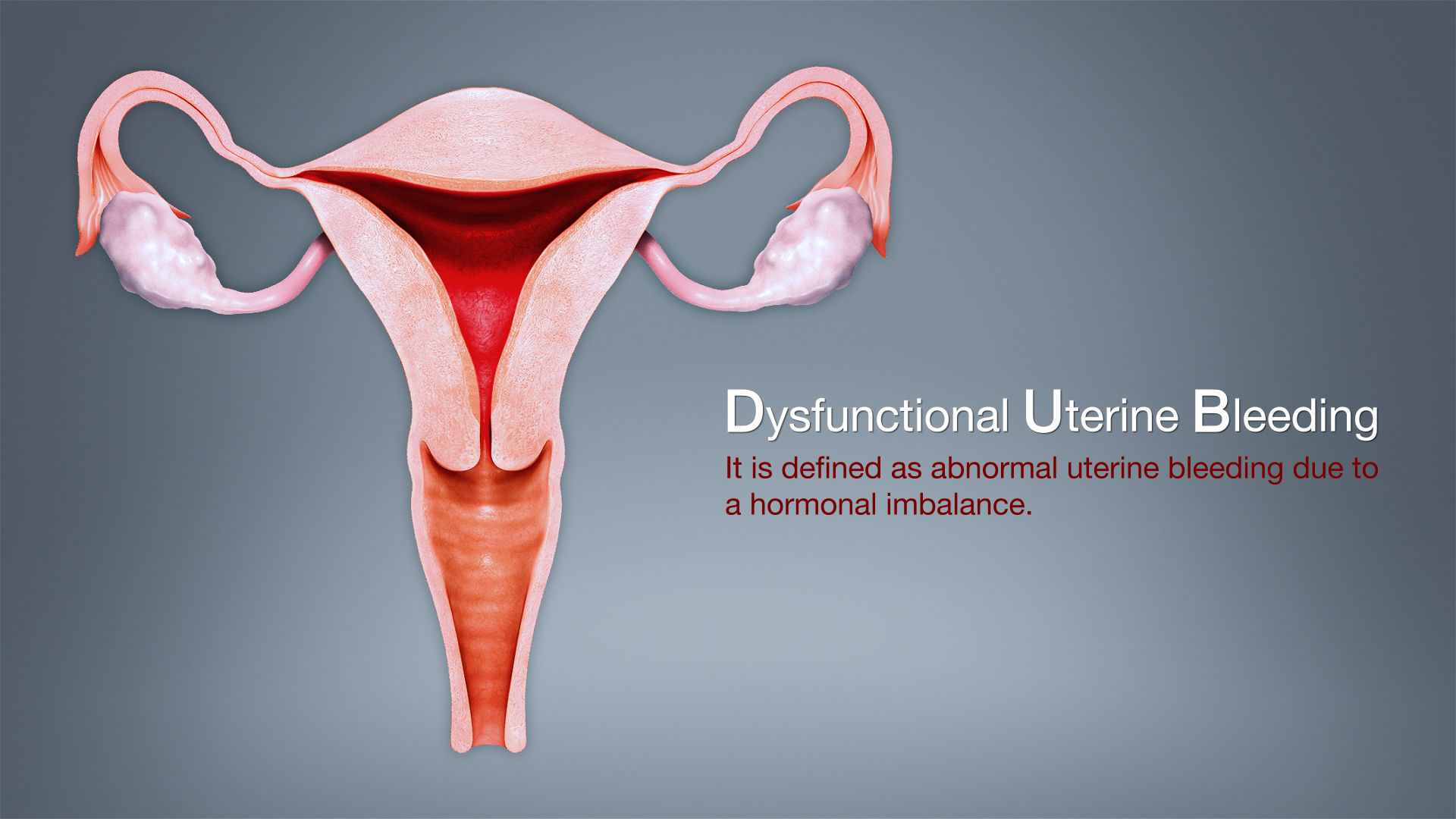Any bleeding from the vagina that varies from a woman’s bleeding during her normal menstrual cycle is called dysfunctional uterine bleeding. Hormones in the body are responsible for triggering the menstrual cycle. When there is an imbalance in the hormones, dysfunctional uterine bleeding occurs. Irregularities in the menstrual cycle involving frequency, regularity, duration, and volume of flow other than during pregnancy, is called dysfunctional uterine bleeding.
Symptoms
The most common symptom of dysfunctional uterine bleeding is when bleeding occurs other than during the normal menstrual cycle. Unusually heavy bleeding during the normal menstrual cycle, however, also constitutes dysfunctional uterine bleeding. Other common signs and symptoms are :
- Very heavy menstrual bleeding
- Bleeding that lasts more than seven days
- Bleeding that contains large clots
- Bleeding that has many clots
- Bleeding that occurs within less than 21 days from the last menstrual cycle
- Bleeding between periods
- Spotting
- Tenderness in the breasts
- Pelvic pain or pressure
- Bloating
Dizziness, fainting, weakness, low blood pressure and abdominal pain are also some of the symptoms that are caused during dysfunctional uterine bleeding.
Causes
Dysfunctional uterine bleeding is usually caused by certain medical conditions. These are :
- Polycystic ovary syndrome (PCOS) : This is an endocrine disorder in which there is an imbalance in estrogen and progesterone levels, making the menstrual cycle irregular.
- Endometriosis : This causes heavy bleeding during periods because the uterine lining grows outside the uterus.
- Uterine polyps : These are small growths that occur within the uterus and cause spotting.
- Uterine fibroids : These are small growths that occur within the uterus, uterine lining or uterine muscle.
- Sexually transmitted diseases such as gonorrhea or chlamydia.
Other causes that change the menstrual pattern are hormonal imbalances, obesity, medications, excess exercise, excess weight loss, stress, the beginning of menstruation and the end of menstruation.
Treatment
If the cause of dysfunctional uterine bleeding is another medical condition, then treating that medical condition will commonly cure the dysfunctional bleeding, and restore normal menstrual cycles. If not then the treatment is usually based on the cause, the amount of bleeding, the age, and the reproductive goals of the woman suffering from this condition. In some cases the hormones get balanced by themselves and no treatment is required. In others, the most common and simple treatment is often oral contraceptives that work to control and regulate the menstrual cycle.
If dysfunctional uterine bleeding is caused by a hormonal imbalance, it cannot be prevented in general. But there are often many effective treatments to help regulate periods and control irregular bleeding.
Disclaimer: The information in no way constitutes, or should be construed as medical advice. Nor is the above article an endorsement of any research findings discussed in the article an endorsement for any of the source publications.









